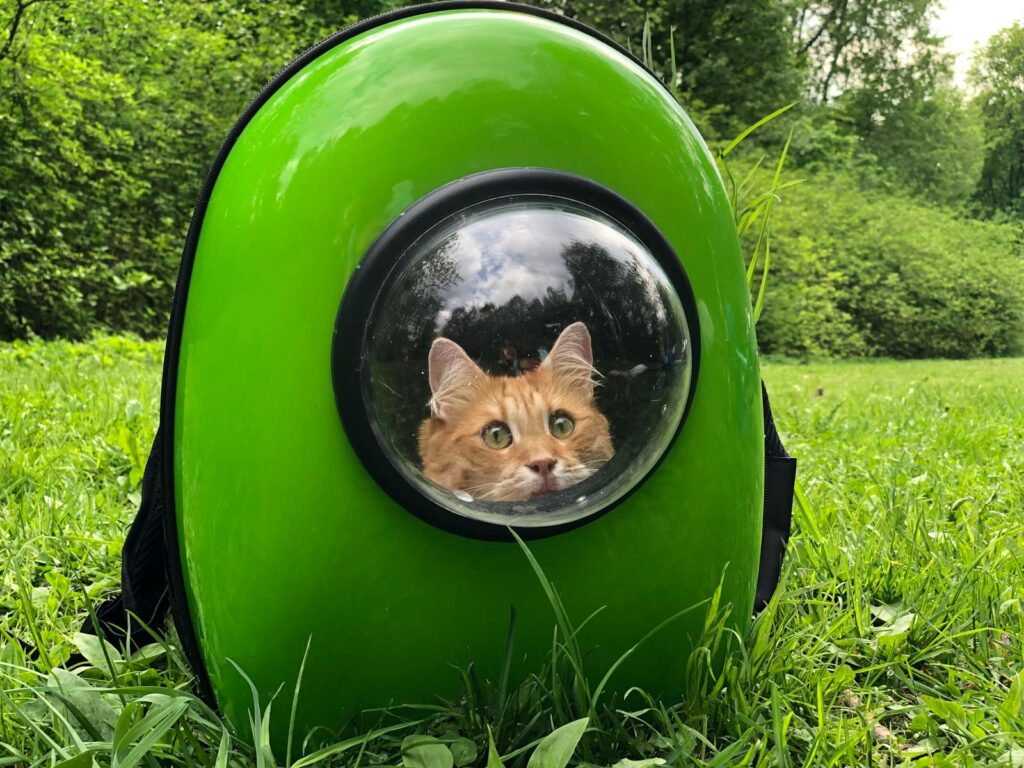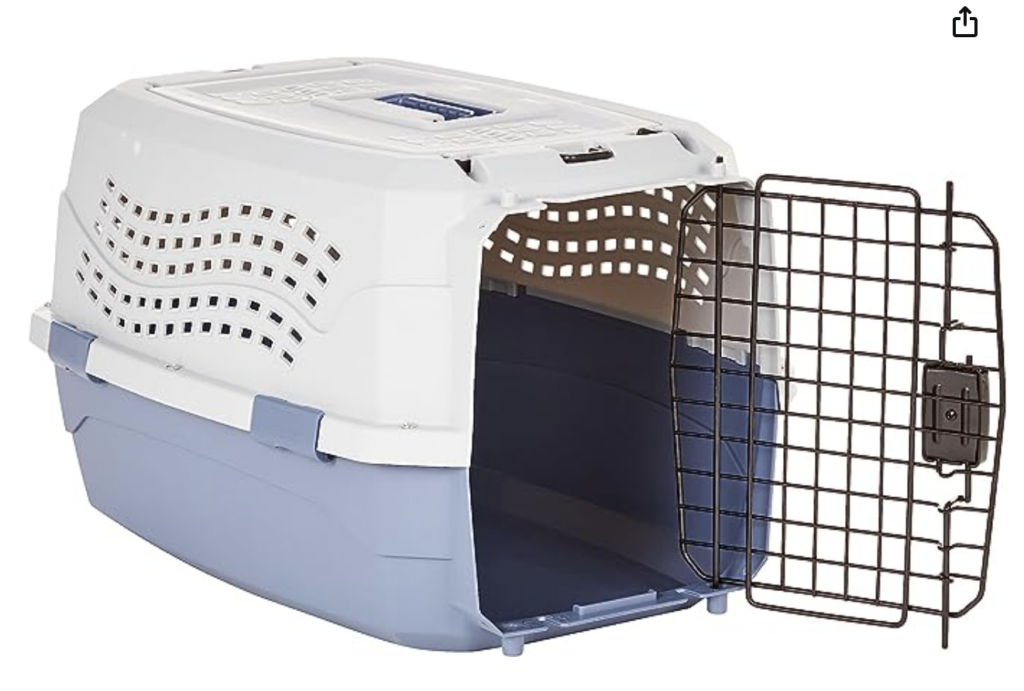Wondering what type of carrier cats prefer? Soft or hard? Which is safest?
It all depends on your cat’s behavior. Anxious? Opt for a hard carrier. Calm? Soft is comfy.
And when it comes to getting your cat in, treats and toys are your best friends. Don’t forget to make it cozy with a blanket. Be sure to check out the video for some helpful guidance!
Do You Need A Cat Carrier?
Short answer: Yes. How else are you taking your cat to the vet or moving safely? Never leave cats loose in the car.
Traveling stresses cats. Here are some steps to ensure a stress-free experience for your cat:
- Prepare the carrier in advance with familiar bedding and pheromone spray.
- Introduce the carrier slowly, allowing your cat to explore it at their own pace.
- Associate positive experiences with the carrier by offering treats and favorite toys inside.
- Practice short trips around the house before longer journeys to acclimate your cat to the carrier and the motion.
- Use a calm and reassuring tone during transportation, and avoid sudden movements or loud noises.
- Provide breaks during longer journeys for your cat to stretch and use the litter box if needed.
- Upon arrival, offer familiar surroundings and comforting items to help your cat relax in their new environment.
Related: How to Calm Your Stressed Cat
Cat Carriers: Value Over Price
Recently, I stumbled upon a list boasting the “10 Best Cat Carriers” with hefty price tags attached, but let me share a little secret—I’ve used a $30 hard cat carrier for 3 years without a hitch. The only reason I upgraded was due to size constraints, not quality.

Let’s shift our focus to what truly matters: functionality and practicality. Invest wisely. Remember, it’s about keeping your cat safe and comfortable, not unnecessarily emptying your wallet.
Your cat couldn’t care less if you splurge $30 or $200 on their carrier. At the end of the day, its primary function is to safely transport your cat from point A to point B.
The below hard cat carrier is less than $30 and it’s a basic one, it does the job and it doesn’t break the bank.
The below cat carrier is a steal at less than $30! It may be basic, but it gets the job done without putting a dent in your wallet.

5 Tips for Choosing the Best Cat Carrier
Choosing the best cat carrier is crucial for ensuring your cat’s comfort and safety during travel. Below, you can explore key tips, from durability and convenience to customer reviews and variety.
Whether it’s a trip to the vet or a long journey, these tips will help you make the best choice for your furry friend.
1) Durability and Portability
Look for a cat carrier made from durable materials that can withstand travel wear and tear. Opt for one that is lightweight and easy to carry, whether you’re going to the vet or traveling long distances.
2) Functionality
Consider features like removable pads for easy cleaning and mesh windows for ventilation to ensure your cat’s comfort during travel. Adjustable straps can provide convenience for you as the pet owner, allowing for hands-free carrying when needed.
3) Feedback and Reviews
Consider feedback from other pet owners to gauge the carrier’s quality and performance. Positive reviews about affordability, durability, and practical design can help you make an informed decision.
4) Availability and Options
When searching for a cat carrier, explore different platforms for availability and options. This ensures you find the perfect fit for your cat’s comfort and safety. With more choices, you can compare features and prices to make the best decision.
5) Personalized Comfort
Select a carrier that suits your cat’s personality and preferences. Whether it’s a classic design or a more colorful option. Focus on providing a snug and comfortable fit for your furry friend.
Prioritize your cat’s comfort and safety when selecting a carrier. A cat carrier should meet your needs without overspending. The goal is to provide peace of mind knowing your cat is well-cared for during every journey.
Final Thoughts
Consider factors such as the carrier’s functionality when choosing your cat carrier. Remember, your cat’s safety and comfort should be the top priority.
Between soft and hard carriers, assess your cat’s behavior. Anxious cats may feel more secure in a hard carrier, while calmer cats may prefer the coziness of a soft one. Ensure the carrier is in good condition, secure, and comfortable for your furry friend.
Invest in a carrier that meets your needs without unnecessary expense. Whether it’s a basic model or a more premium option, what matters most is its ability to transport your cat from point A to point B.
Prepare the carrier in advance to provide breaks during longer journeys. Steps like this can help make traveling with your cat a breeze.
Focus on your cat’s well-being, and you’ll be rewarded with peace of mind. knowing your feline companion is safe and comfortable during every journey.
Frequently Asked Questions
Do cats prefer hard or soft carriers?
Soft carriers offer less protection compared to hard-sided carriers. It all depends on your cat’s behavior. Anxious cats may feel more secure in a hard carrier, while calm cats may prefer the comfort of a soft carrier.
Should you put a blanket over the cat carrier?
Yes, covering the carrier with a blanket can create a cozy and secure environment for your cat, helping to reduce stress during travel.
How long can a cat be kept in a carrier?
Cats should not be kept in a carrier for extended periods. For short journeys, up to a few hours is fine. It’s essential to provide breaks for stretching and bathroom needs. For longer distances, plan regular stops to allow your cat to stretch its legs and use the litter box.

Leave a Reply